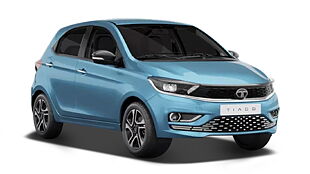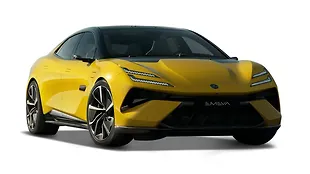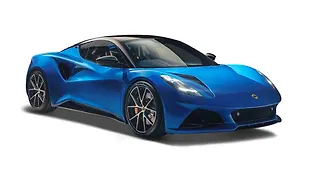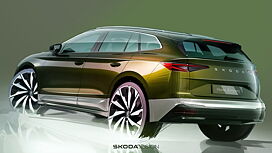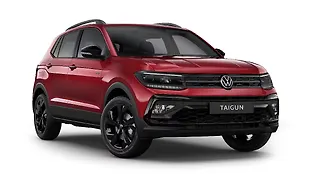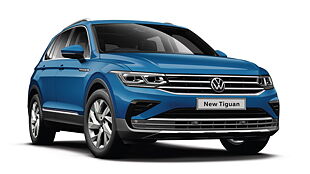Introduction
Those men and their magnificent flying machines- It may be the name of a 50-year-old comedy that chronicles the exploits of man’s first attempts at flight but seems more than appropriate to describe the fast-paced world of rallying where a synergy of man and machine produces a spectacular show.

Exterior
The rally car looks pretty much like the pre-2014 facelift petrol-engined Polo, just beefier and completely covered in sponsorship stickers. There is a certain ruggedness that the car exudes and the first thing that hits you is the muscular stance thanks to the larger wheels and fatter rubber.

There is immense attention to detail in the form of the hood clips, reinforced bumper clips and the small roof air-scoops for ventilation.

This rally Polo runs on 185/60 section R15 MRF ZTW competition- spec tyres. It is a super hard compound designed to take the on the punishing terrain. One set of tyres will last for a rally at the most.

While weight- saving seems to be the new mantra for racing everywhere, rallying is a sport that requires your car to be strong really strong, which means that all stock metal bits have been retained or strengthened.

Interior
Open the driver’s door and you find the roll cage. Squeeze your way into the driver’s seat and the first thing you notice is that the standard wheel has been replaced by a race- spec OMP wheel.

The dashboard has been retained but sans the comfort features. The 2-DIN system has been replaced by a host of toggle switches which includes the cabin light, launch control, ECU ON/OFF and the horn. The centre of this setup is dominated by the ON/OFF switch for all the electronics while the glove box has been retained to house the rally-spec ECU.

The AC vents are just blanks as ventilation is provided through the roof scoops. The gear lever is custom while the handbrake is non-locking to aid the driver in attacking corners. Most drivers have modified the pedals to suit their seating stance and comfort levels.

The driver and navigator both get FIA-approved racing buckets with a five-point harness. There are no carpets or insulation and all that the driver and navigator get are thin sheets of coloured metal under their feet.

The rear is an empty space which is dominated by the roll cage. It also houses two spare wheels, a jack and a basic tool kit all restrained to the floor pan. There is also a safety net which keeps these components from entering the cockpit.

Engine & Gearbox
The rally-spec Polo is powered by the same 1.6-litre naturally aspirated mill that in stock form produces 103bhp and 153Nm of torque. It is mated to a five-speed manual gearbox and currently powers cars like the Vento and the Skoda Rapid.

The IRC runs almost stock class and hence there are not many engine modifications. The exhaust piping can be altered after the first bend while drivers are free to use conical air filters with cold air intakes. The cars run custom ECUs with accessories like launch control. The team and drivers are –tight-lipped about the output but we suspect that it is somewhere in the region of 115bhp and 170Nm of torque.
Underpinnings
So now the big question is that if the engine has enough grunt to blast past the stock Polo, how is it possible for the rally cars to stick through gravel-filled corners and take those jumps at breakneck speeds?


Conclusion
We spent three days outside Nashik following the rally cars from stage to stage and discovered that they are hard machines and demand every bit of your attention for every single minute that you are attempting to tame them.


![Volkswagen Polo [2014-2015] Image Volkswagen Polo [2014-2015] Image](https://imgd.aeplcdn.com/272x153/cw/ec/12907/Volkswagen-Polo-Right-Front-Three-Quarter-55831.jpg?wm=0&q=80)
![Volkswagen Polo [2014-2015] Right Front Three Quarter Volkswagen Polo [2014-2015] Right Front Three Quarter](https://imgd.aeplcdn.com/199x112/cw/ec/12907/Volkswagen-Polo-Right-Front-Three-Quarter-55831.jpg?v=201711021421&q=80)
![Volkswagen Polo [2014-2015] Right Front Three Quarter Volkswagen Polo [2014-2015] Right Front Three Quarter](https://imgd.aeplcdn.com/199x112/cw/ec/12907/Volkswagen-Polo-Right-Front-Three-Quarter-55830.jpg?v=201711021421&q=80)
![Volkswagen Polo [2014-2015] Left Front Three Quarter Volkswagen Polo [2014-2015] Left Front Three Quarter](https://imgd.aeplcdn.com/199x112/ec/86/7c/12907/img/orig/Volkswagen-Polo-Facelift-Left-Front-Three-Quarter-26393.jpg?v=201711021421&q=80)
![Volkswagen Polo [2014-2015] Interior Volkswagen Polo [2014-2015] Interior](https://imgd.aeplcdn.com/199x112/ec/87/C5/14022/img/ol/Volkswagen-Polo-Facelift-29908.jpg?v=201711021421&q=80)
![Volkswagen Polo [2014-2015] Interior Volkswagen Polo [2014-2015] Interior](https://imgd.aeplcdn.com/468x263/ec/87/C5/14022/img/ol/Volkswagen-Polo-Facelift-29895.jpg?v=201711021421&q=80)
